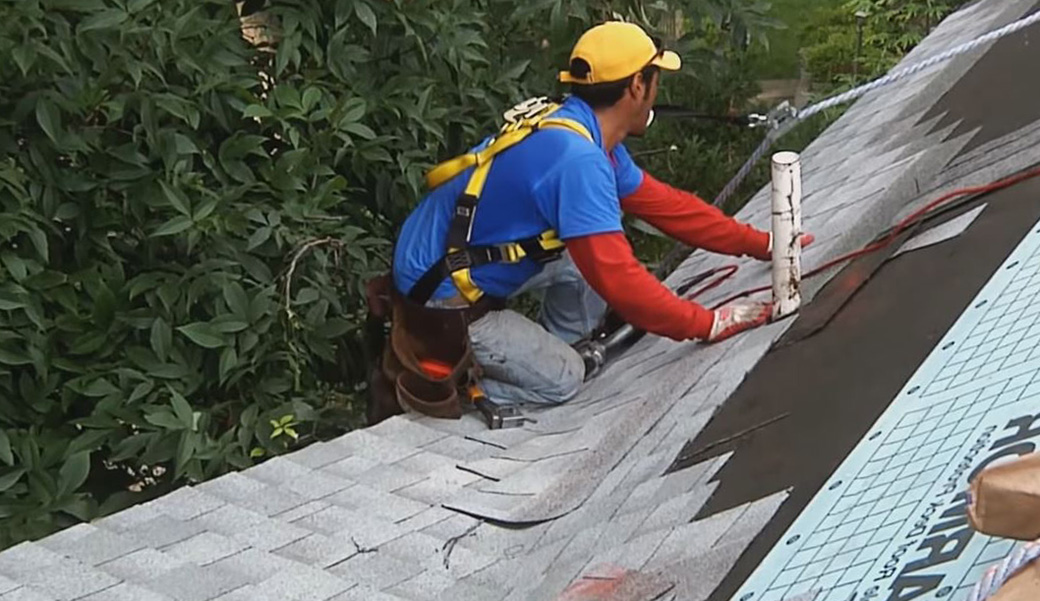A Simple Guide to Asphalt Shingles
Asphalt shingles are also sometimes called composition shingles, and they’re one of the most popular roofing types. They have many benefits to offer the average residential property, with few disadvantages, with even a couple of economically-friendly factors to boot.

WHAT DO ASPHALT SHINGLES LOOK LIKE?
There are three main ‘types’ or looks of asphalt/composition shingles.
Three-tab shingles — one piece that looks like three different, smaller-sized shingles.
Dimensional shingles — also known as laminate shingles and architectural shingles, these have started to overtake three-tab shingles in terms of popularity, and are thicker too. You will also find you have a number of color options to pick from, even resembling wooden materials.
Premium shingles — also known by a few other names, including designer shingles, Grand Canyons, Presidential, and Grand Sequoia, these are the thickest option of the three. As the name suggests, the “premium” name often means more options in terms of being eco-friendly, and they’re also the most aesthetically-friendly.
ASPHALT SHINGLES — THE PROS
One of the best advantages of opting for an asphalt or composition shingle roof is that most roofers know just how to do it. Other, more complex styles of roofing and less common styles usually require more complex and in-depth training. Certain roofers will have specialist fields in one or more types of roofing, but asphalt shingles is the one that the majority of them will cover.
Other advantages of using asphalt shingles for your roof is that they are not overly expensive to install. If you live in a pretty ordinary upstairs-downstairs house, with a square footage of somewhere in the region of 2,000 to 2,600, you’ll be looking at around $6,5000 - $8,000. This can sometimes include the existing roof layer being taken away. It amounts to roughly $3-$5 per square footage.
You will also find asphalt shingles that can offer problem-solving properties depending on where you live. If your neighborhood has a persistent problem with moss or algae on the roof, asphalt shingles can be installed that already contain a layer of copper or zinc. This will prevent the need for additional copper or zinc strips to be installed on the top of the roof later on. You can also get asphalt shingles that are designed for high-wind areas, with warranties that cover up to 150mph; or stronger, more durable shingles for areas where hail is a constant problem.
ASPHALT SHINGLES - THE CONS
One of the worst thing about having asphalt shingles as your roofing material is the knowledge that pretty much all of those shingles end up in landfill sites once they have been removed from a roof. And the shingles will need to be replaced from time to time. Premium shingles can last for fifty years or more, but the cheaper, thinner shingles are only really warrantied for up to twenty years. As with most roofing types, maintenance will be required to get the maximum length of time, and this will include regular removal of algae or moss in areas where copper and zinc have not been used.
In order to keep asphalt shingles looking their best, you may also find that you need to either clean them yourselves every now and again, or hire in a professional roofing company to come and clean them for you.
Visit our Roof Contractor home page to learn more about us, or hire a local professional from over 100 USA locations.

